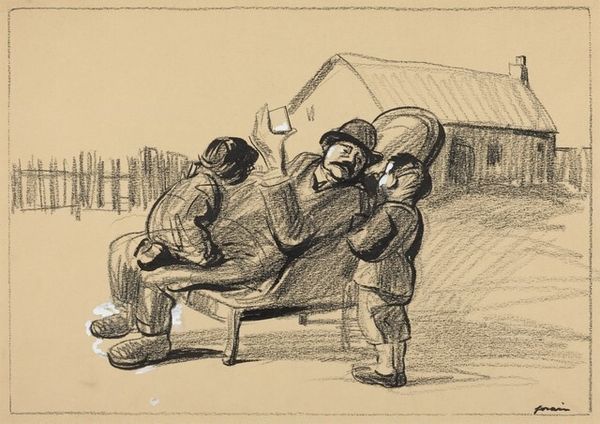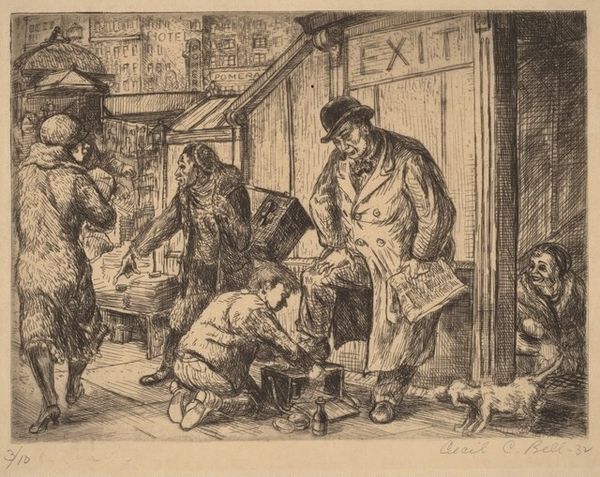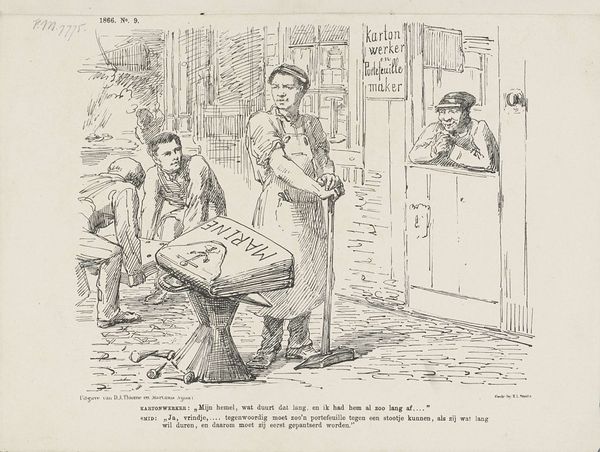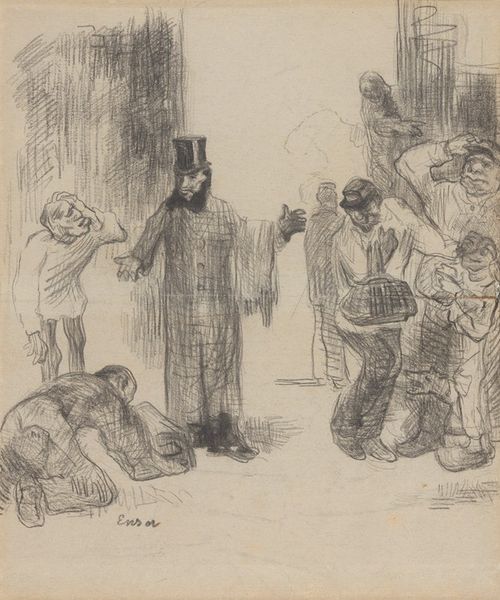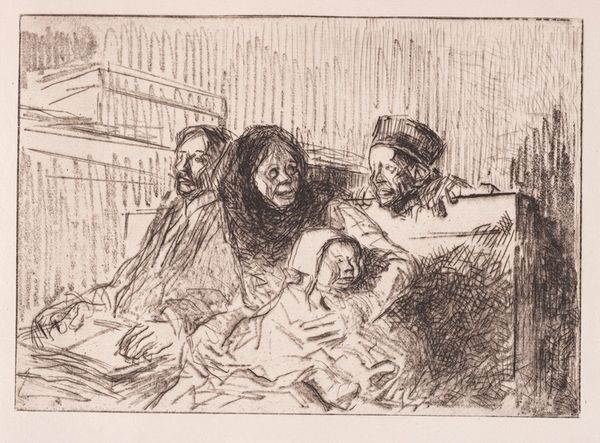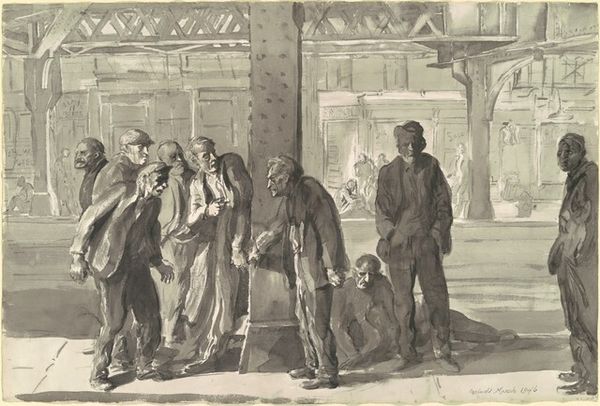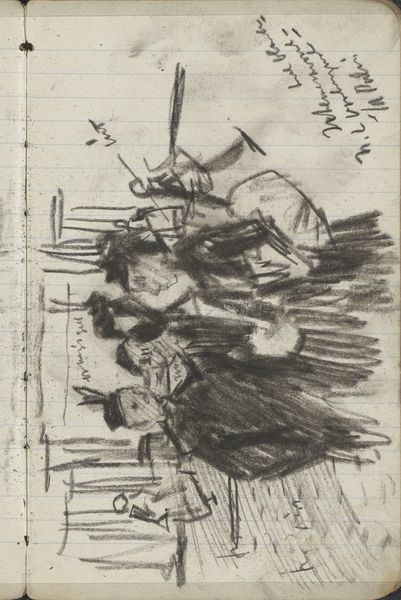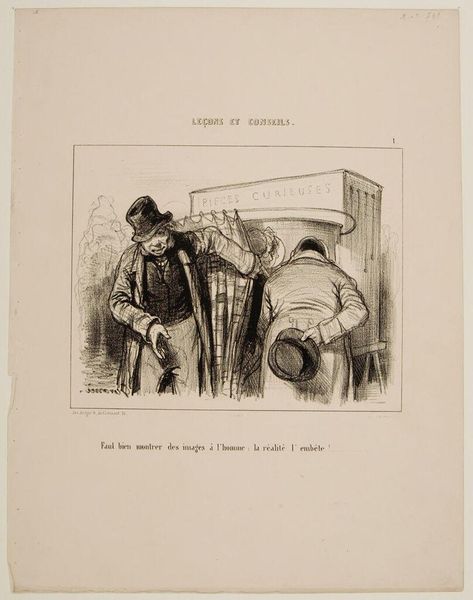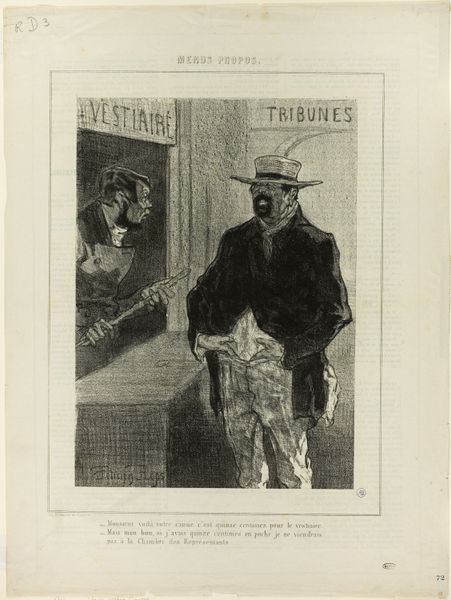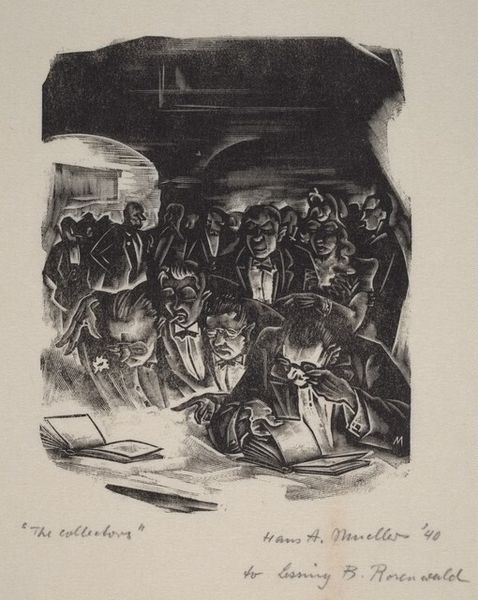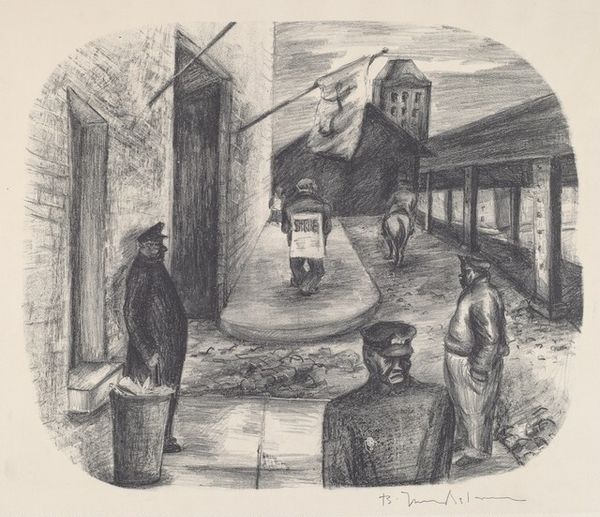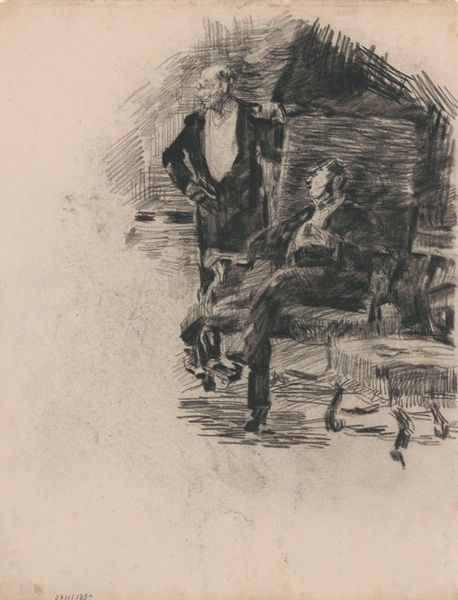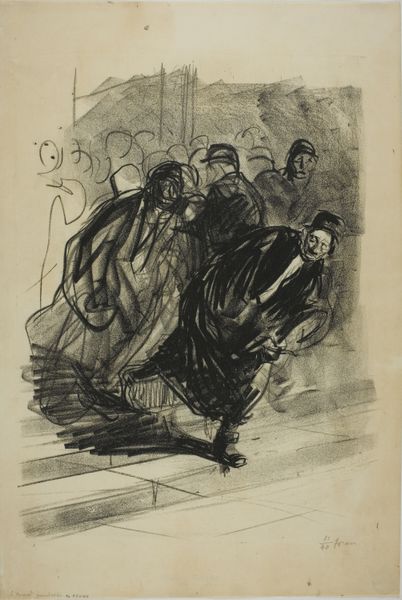
drawing, dry-media, charcoal
#
portrait
#
drawing
#
narrative-art
#
pen sketch
#
pencil sketch
#
german-expressionism
#
dry-media
#
pencil drawing
#
charcoal
#
history-painting
#
realism
Copyright: Public domain
Curator: Steinlen’s 1917 drawing, “On the enemy land – Russian prisoners starves from hunger”, hits with unexpected force. The scene pulses with pain, a quiet suffering rendered visible through raw linework. Editor: The palpable anguish is evident; you can almost feel the scratch of charcoal on the paper. There's a stark, deliberate rawness here that elevates it beyond mere reportage. The materiality reinforces its gravity. Curator: It's undeniably a harrowing visual indictment. What really gets me is how Steinlen implicates the viewer, demanding we witness the plight of these men during a brutal period of World War One. Editor: Exactly! Note the artist's strategic use of dry media—likely charcoal or a similar material—to convey texture, primarily to enhance the skeletal nature of the prisoners. It wasn’t simply observed; it was manufactured to evoke a feeling of desolation. Curator: The social context is, of course, unavoidable. Consider how images like this circulated. They were often politically charged, and actively involved in the socio-political discourse surrounding conflict. This isn’t just a drawing, it's visual ammunition in its era. Editor: The drawing's dissemination and use are pivotal. To grasp its historical significance, it's critical to investigate its place within the network of printmaking shops, periodicals, and distribution avenues. The labor behind this piece implicates a broad range of factors extending beyond simply the singular artist in question. Curator: A point well-made. Furthermore, I believe the deliberate rough style—almost reminiscent of German Expressionism—emphasizes an abandonment of academic ideals to showcase stark realism. The historical timeline connects to rising counter-narratives during WWI. Editor: Its very construction acts as resistance. We’re presented with a rejection of polished surfaces and a confrontation with labor. Every line is a conscious decision reflecting an awareness of craft as a mode of social critique. Curator: Considering how artists leveraged their craft in a period punctuated by massive shifts in social structures—caused in no small part by war—renders this a poignant reminder of art's potential. Editor: Absolutely. By delving into the material and its genesis, we understand better the message and influence of a singular piece—how labor, purpose, and impact weave together, challenging assumptions on art’s traditional role.
Comments
No comments
Be the first to comment and join the conversation on the ultimate creative platform.
